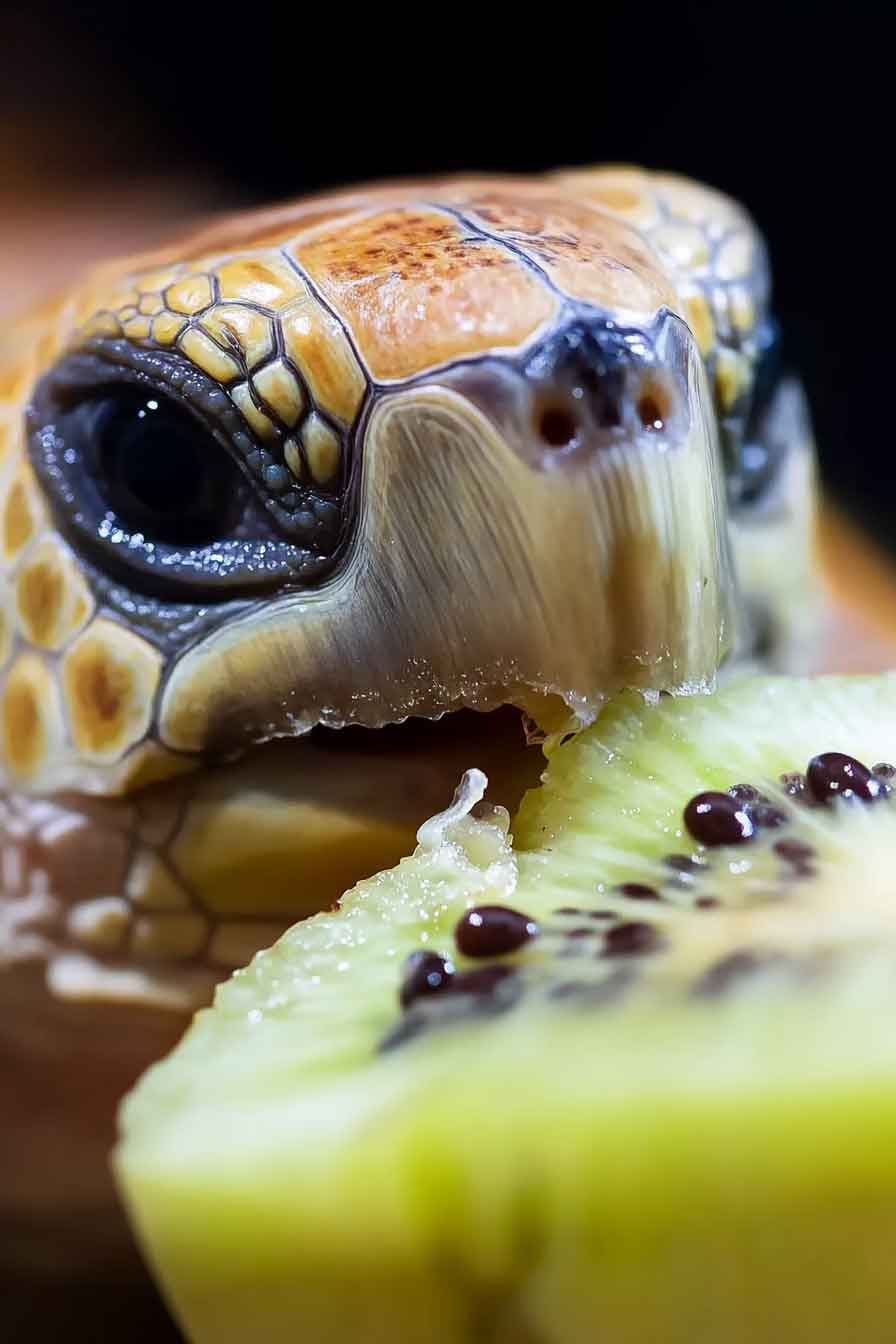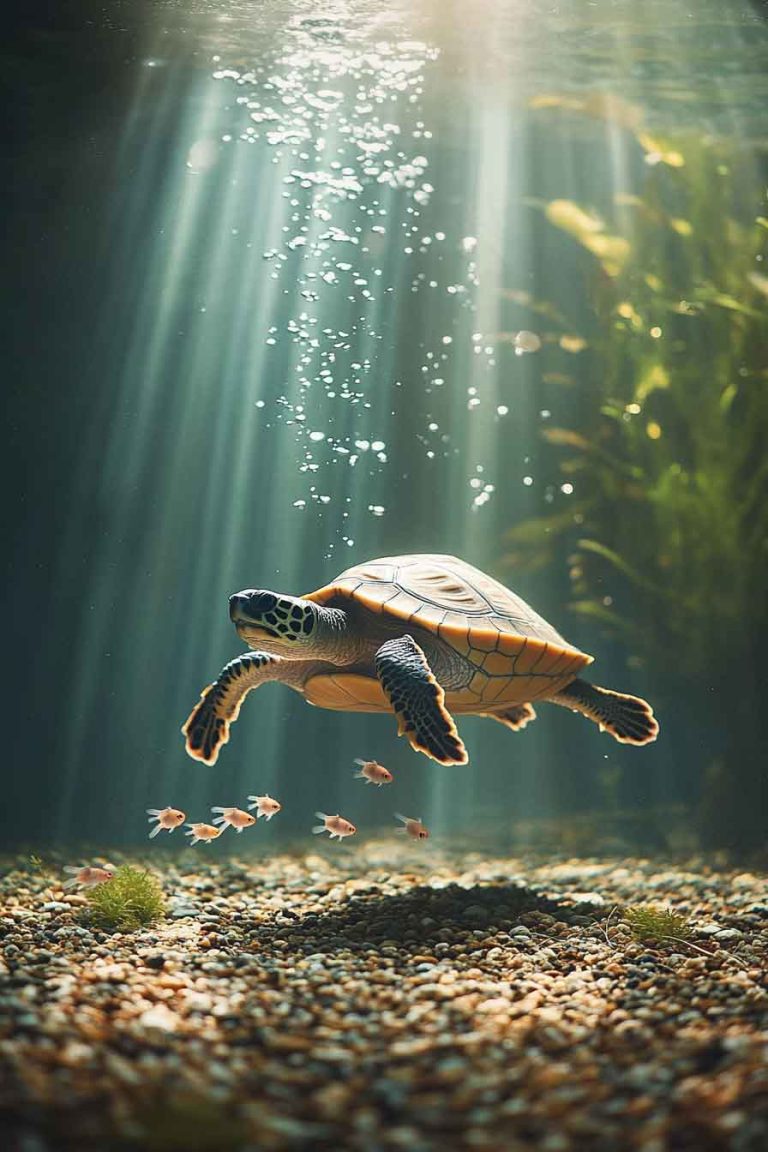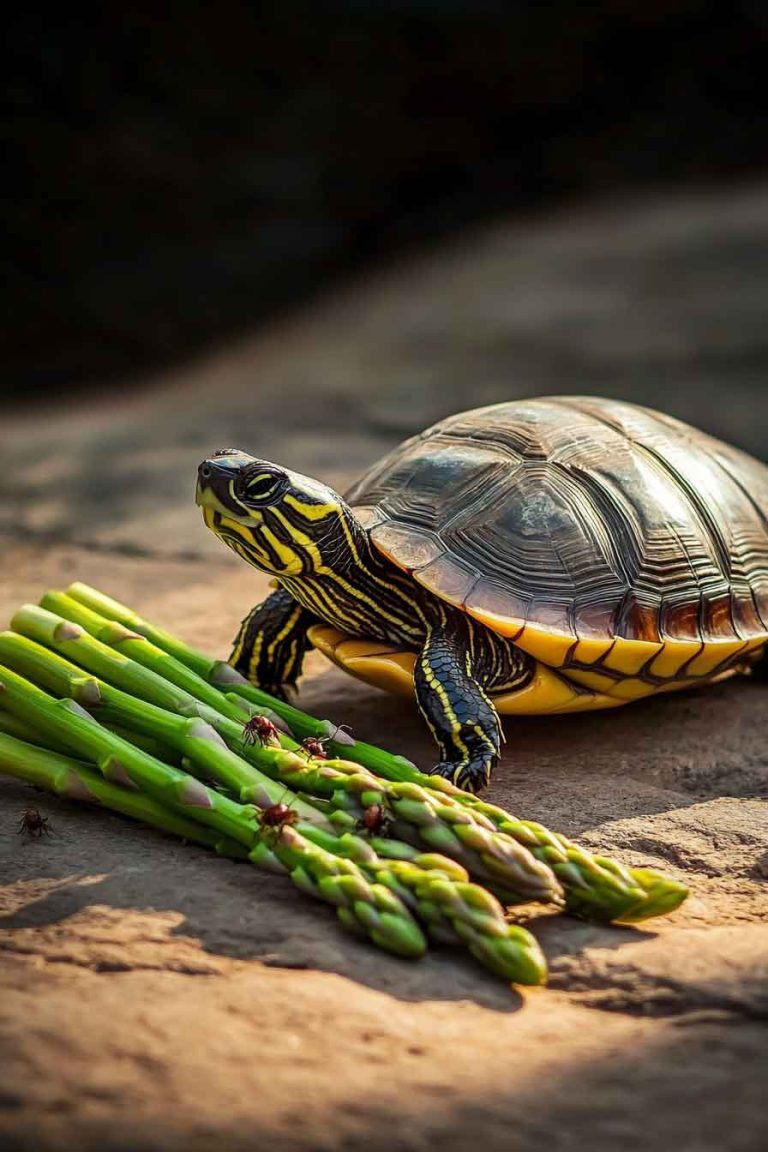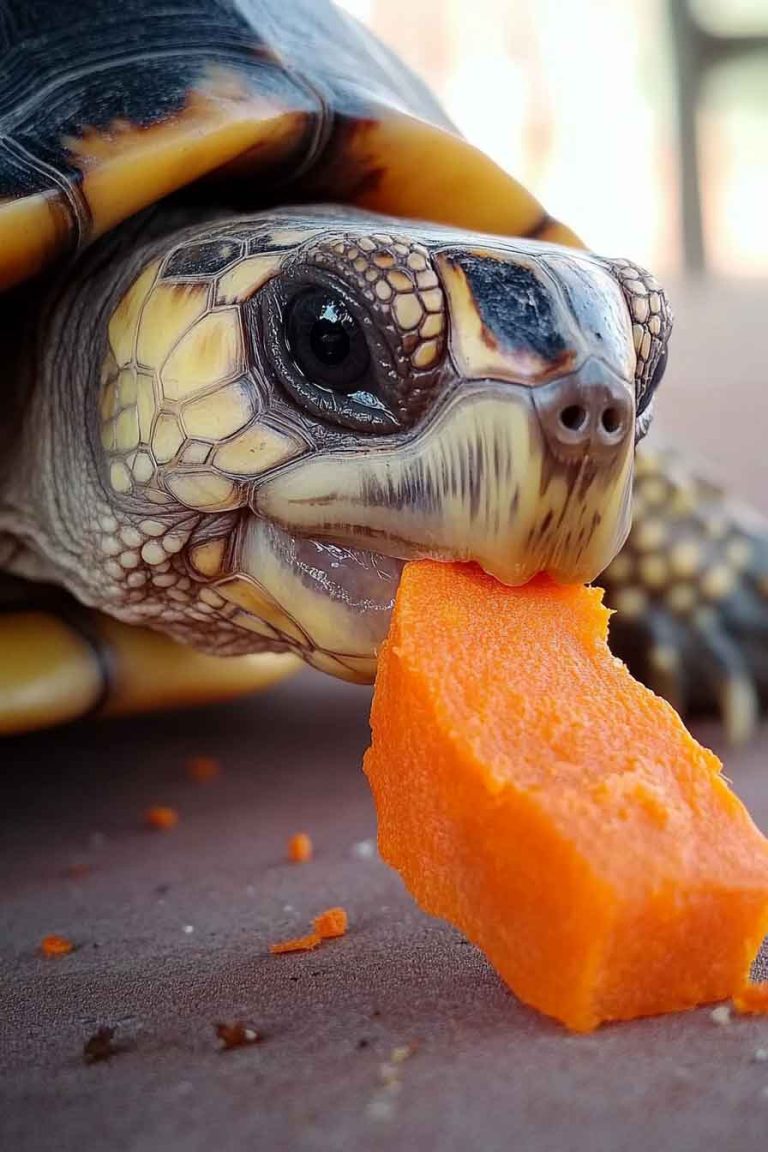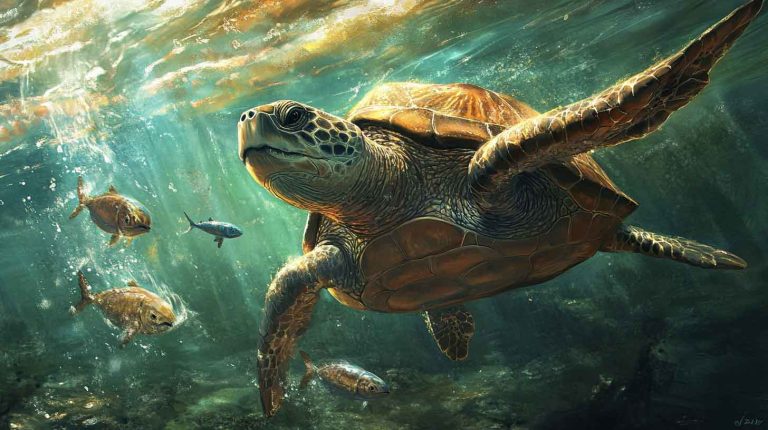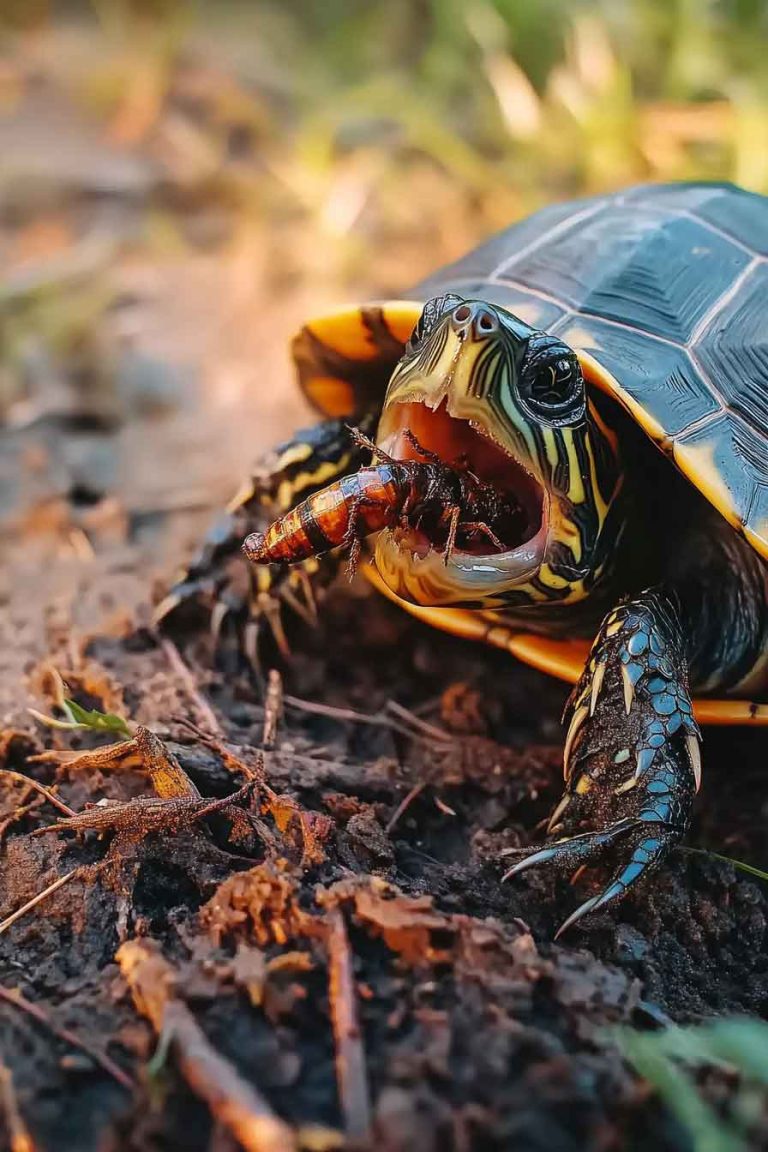Can Turtles Eat Kiwi? Everything You Need to Know Before Feeding
If you’re a turtle owner like me, I know you’ve probably wondered about sharing some of your favorite fruits with your shelled companion. I’ve been there too – watching my turtle eye my snacks and wondering if it’s safe to offer a small piece. When it comes to kiwi fruit, this question becomes particularly important…
If you’re a turtle owner like me, I know you’ve probably wondered about sharing some of your favorite fruits with your shelled companion. I’ve been there too – watching my turtle eye my snacks and wondering if it’s safe to offer a small piece. When it comes to kiwi fruit, this question becomes particularly important because of kiwi’s unique nutritional profile.
So, can turtles eat kiwi? The answer is yes, but with important limitations – turtles can eat kiwi in very small amounts as an occasional treat. However, kiwi should never be a regular part of your turtle’s diet due to its high sugar content, high acidity levels, and improper calcium-to-phosphorus ratio. I recommend offering only tiny pieces once or twice a month at most.
In this comprehensive guide, I’m going to share everything I’ve learned about feeding kiwi to turtles through my experience and research. We’ll explore why kiwi can be problematic for turtles, what health risks to watch for, and how to safely offer this fruit if you choose to do so. Keep reading if you want to make informed decisions about your turtle’s diet.
Can You Feed Kiwi To Your Pet Turtle?
The answer is complicated – while kiwi isn’t immediately toxic like some foods, it’s not ideal for regular feeding. As a turtle owner, I’ve learned that just because something is healthy for humans doesn’t mean it’s suitable for our reptilian friends.
Let me break down what’s actually in 100 grams of kiwi fruit so you can understand why I’m cautious about this tropical treat:
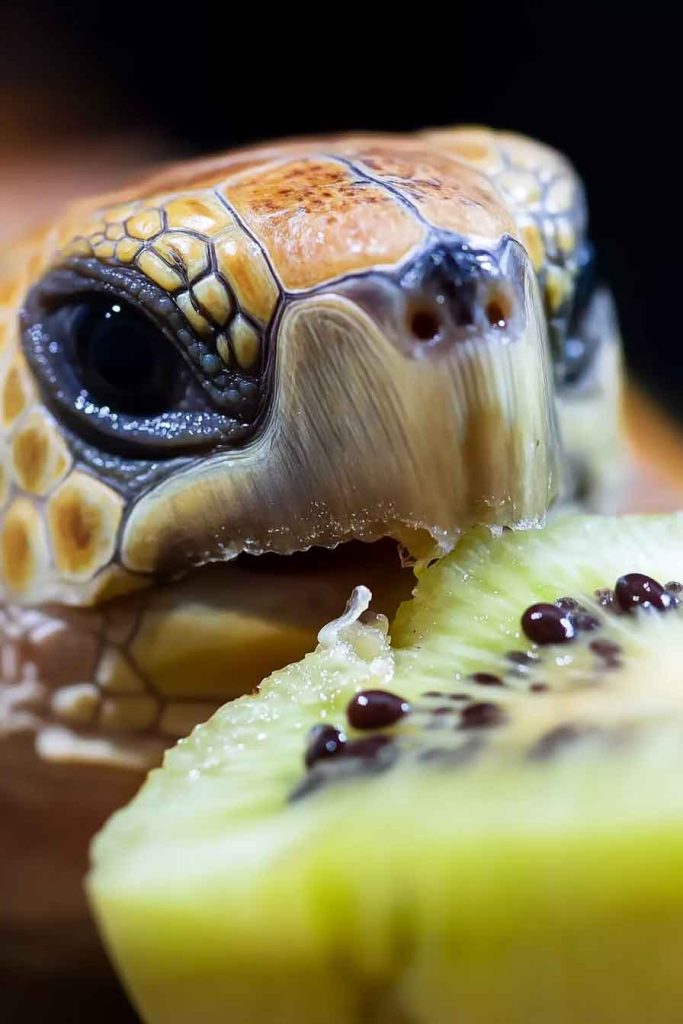
Nutritional Content of Kiwi (per 100g):
- Carbohydrates: 14.66 g
- Sugar: 8.99 g
- Protein: 1.14 g
- Calcium: 34 mg
- Phosphorus: 34 mg
- Vitamin C: 92.7 mg
- Vitamin K: 40.3 mcg
- Potassium: 312 mg
- Magnesium: 17 mg
- Fiber: 3 g
Looking at these numbers, I can immediately see several red flags for turtle health. The sugar content is quite high at nearly 9 grams per 100 grams – that’s a significant concern since turtles have difficulty processing sugars and can develop digestive issues from too much sweet fruit.
The calcium-to-phosphorus ratio is exactly 1:1 (34mg each), which is problematic. Turtles need a 2:1 calcium-to-phosphorus ratio for proper shell and bone health. When this ratio is off, it can lead to metabolic bone disease over time.
The extremely high vitamin C content (92.7 mg) is another concern. While vitamin C isn’t toxic, kiwis are among the most acidic fruits, and turtles have sensitive digestive systems that can be upset by highly acidic foods.
Do Turtles Like Kiwi?
From my observations and experience with turtle owners, most turtles are actually quite attracted to kiwi’s sweet taste and soft texture. The natural sugars in kiwi can make it appealing to turtles, which is exactly why we need to be careful – just like children might choose candy over vegetables, turtles might prefer sweet fruits over their healthier staple foods.
However, I’ve noticed that whether a turtle shows interest in kiwi often depends on their individual preferences and what they’re accustomed to eating. Some turtles will eagerly consume kiwi pieces, while others might ignore them completely.
The problem is that a turtle’s natural instinct doesn’t always guide them toward the healthiest choices, especially in captivity where they don’t have access to their natural diet variety. This is why it’s our responsibility as pet owners to make informed decisions about what we offer them.
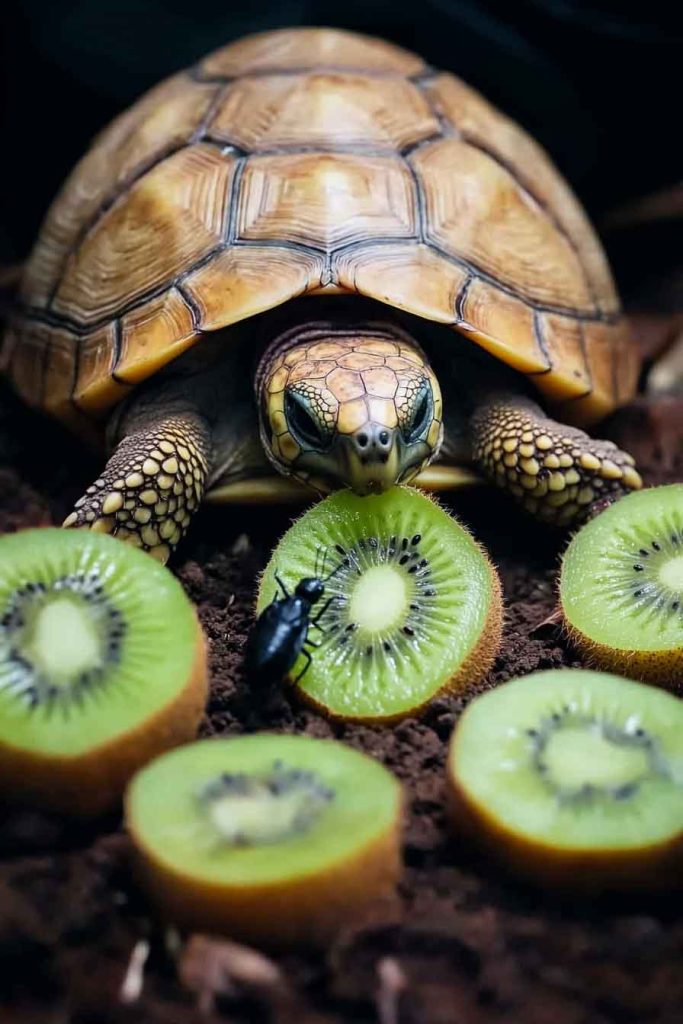
Health Risks for Turtles Eating Kiwi
While kiwi isn’t immediately dangerous like some foods, regular consumption can lead to several health issues that I want you to be aware of. Let me walk you through the main concerns I’ve identified:
Digestive Disorders
The high sugar content in kiwi (nearly 9 grams per 100 grams) can cause significant digestive upset in turtles. I’ve learned that turtles lack the enzymes necessary to properly break down large amounts of sugar, which can lead to:
- Diarrhea and loose stools
- Digestive upset and discomfort
- Fermentation in the gut causing gas and bloating
- Disruption of healthy gut bacteria
The high acidity of kiwi can also irritate your turtle’s sensitive stomach lining. Kiwis have a pH of around 3.1-3.96, making them quite acidic. This acidity can cause heartburn-like symptoms and stomach irritation in turtles.
Metabolic Bone Disease Risk
This is perhaps my biggest concern with feeding kiwi regularly. The 1:1 calcium-to-phosphorus ratio in kiwi disrupts the ideal 2:1 ratio that turtles need. When turtles consistently consume foods with improper ratios, the excess phosphorus can bind to calcium in their bodies, leading to:
- Soft, deformed shells
- Weak and brittle bones
- Shell pyramiding in young turtles
- Fractures and breaks in the shell or bones
- Overall skeletal weakness
I’ve seen too many cases where well-meaning owners accidentally caused metabolic bone disease by regularly feeding fruits like kiwi without understanding the long-term consequences.
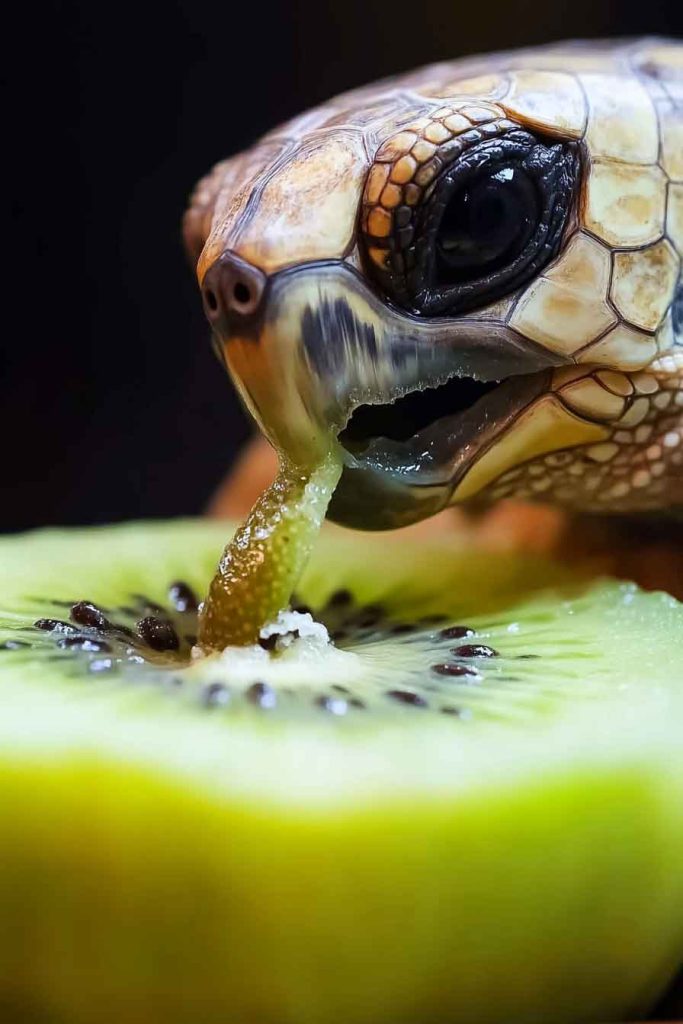
Blood Sugar Issues
Unlike mammals, turtles don’t regulate blood sugar the same way we do. The high natural sugar content in kiwi can cause blood sugar spikes that their bodies aren’t equipped to handle efficiently. Over time, this can contribute to:
- Lethargy and reduced activity levels
- Increased susceptibility to infections
- Potential organ stress, particularly on the liver and kidneys
Nutritional Imbalance
When turtles fill up on sweet, tasty foods like kiwi, they’re less likely to eat their nutritionally complete staple foods. This can lead to overall nutritional deficiencies even if the kiwi itself contains some beneficial nutrients.

How Much Kiwi Should Turtles Eat?
Based on my research and consultation with reptile veterinarians, I recommend treating kiwi as a very occasional treat only. Here’s my guideline:
- Maximum frequency: Once or twice per month at most
- Portion size: A piece no larger than your turtle’s head
- Age considerations: Only for adult turtles (never juveniles or babies)
For adult turtles, I suggest offering a small cube of kiwi (about 1/4 inch for smaller species, 1/2 inch for larger species) mixed with their regular vegetables. This ensures they don’t fill up on the kiwi and still consume their nutritionally appropriate foods.
Can You Feed Kiwi to Baby Turtles?
Absolutely not. I never recommend feeding kiwi to baby or juvenile turtles under any circumstances. Here’s why:
Baby turtles have even more sensitive digestive systems than adults, and their nutritional needs are much more specific. The high sugar and acid content in kiwi can cause severe digestive upset in young turtles. More importantly, baby turtles need every bite to count nutritionally for proper growth and development – there’s simply no room in their diet for sugary treats.
The calcium-phosphorus imbalance is particularly dangerous for growing turtles whose shells and bones are still developing. Even small amounts of foods with improper ratios can lead to permanent developmental issues.
Frequently Asked Questions (FAQs)
Can Box Turtles Eat Kiwi? Box turtles can have tiny amounts of kiwi as an occasional treat, but the same restrictions apply. Box turtles are particularly prone to preferring sweet foods over their proper diet, so I’m especially cautious about offering kiwi to them.
Can Red-Eared Slider Turtles Eat Kiwi? Red-eared sliders can have small amounts of kiwi very occasionally, but their diet should primarily consist of aquatic plants, commercial turtle pellets, and appropriate vegetables. The high sugar content can be particularly problematic for sliders as they’re prone to digestive issues.
Can Painted Turtles Eat Kiwi? Painted turtles can have minimal amounts of kiwi as a rare treat, but like other aquatic species, their natural diet doesn’t include tropical fruits. I recommend focusing on foods that more closely match their natural habitat preferences.
How Do I Prepare Kiwi for My Turtle? If you decide to offer kiwi, always remove the skin (which can be difficult to digest), cut it into appropriate-sized pieces, and remove any seeds. Offer it mixed with regular vegetables, not as a standalone treat.
Conclusion
While kiwi isn’t immediately toxic to turtles like some foods, it’s not an ideal choice for our shelled friends. The high sugar content, acidic nature, and improper calcium-phosphorus ratio make it a treat that should be offered very sparingly, if at all.
As a responsible turtle owner, I always remind myself that the best diet for my turtle consists of foods that closely match what they would eat in the wild – leafy greens, aquatic plants, and appropriate commercial foods. There are plenty of safer, more nutritious options for occasional treats, such as small pieces of squash, bell peppers, or berries in tiny amounts.
Remember, when in doubt, consult with a veterinarian who specializes in reptiles. Your turtle’s health and longevity depend on the dietary choices we make for them every day. I hope this comprehensive guide helps you make informed decisions about whether to include kiwi in your turtle’s diet.

